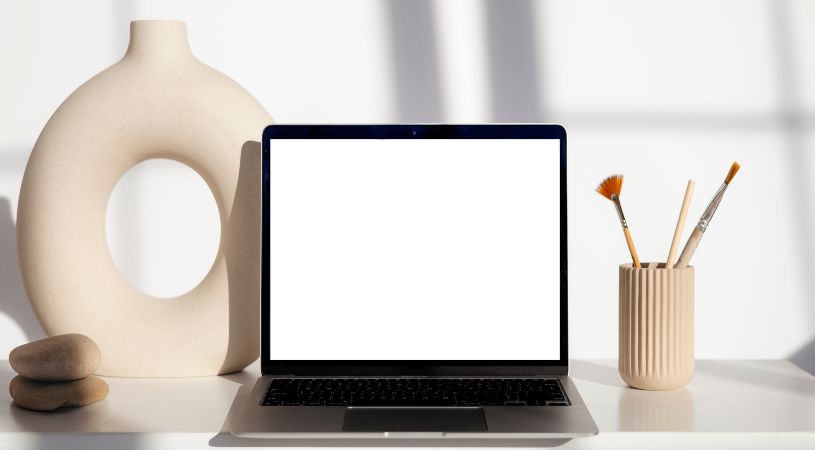The essential guide to sales demos

A sales demo is where you can really show exactly how your product will solve your prospect’s pain points.
It’s where you can customise your solution to zoom in on the critical problems your prospect faces with no distractions.
The best sales demos are also an ideal way for you as a salesperson to build trust and confidence. You are not showing off what you can do, but showing what your product will do for your prospect – how it will make a difference to their department, colleagues, suppliers and customers?
Which begs the question: what is a great sales demo?
How should you prepare, who should be there, where in the sales cycle should it sit and what would a positive outcome look like?
In this essential guide to the sales demo, we are going to run through everything you need to know to go beyond showing a prospect and into selling a solution.
Contents
- What is a sales demo?
- Nailing your prospect’s pain points
- Bringing together the decision makers
- Setting the date and scene
- Personalising your presentation
- How long should your demo be?
- Showcasing your solution
- Preparing for difficult questions
- Your checklist for a perfect sales demo
What is a sales demo?
A sales demo is a presentation that is made, either remotely or on-premise, to prospective buyers and stakeholders within an organisation.
The purpose of the demo is to demonstrate relevant features and focus on the value they will add to this particular setting.
A great sales demo will always be based on:
- A thorough understanding of an organisation’s pain points
- Tailoring the presentation to the goals and objectives of the organisation
- Highlighting how specific problems will be solved
Nailing your prospect’s pain points
There is no such thing as an ‘off-the-shelf’ sales demo.
By definition each demo is intended to demonstrate a product in a specific use-case and environment.
Different industries, companies, departments and clients will be experiencing different challenges and looking to take advantage of different opportunities.
The best way to come across as a salesperson – rather than a trusted advisor – is to simply reel off the features of your product without tailoring your presentation to the needs and pain points of your prospect.
For this reason, you should avoid offering demos at group level – that is to say a demonstration to a disparate group of prospects from different organisations.
Your demo must be customised and personalised. It should never precede a qualification call and is best arranged further down the sales cycle when your understanding of specific requirements is fine tuned.
Research and preparation are essential for understanding your prospect’s specific needs. Having achieved this your demo will instil confidence and take you one step closer to sealing the deal.
Bringing together the decision makers
It is incredibly rare that a B2B buying decision will be made by one person alone. Gartner reports that you can expect, on average, seven decision makers to be involved.
This means you need to think carefully about how you can address the requirements of a group of stakeholders who may well have conflicting expectations.
Before you schedule your demo, you are going to need to get all the decision-makers to be present.
Through leading questions to your sales contact you can discover exactly who you need to be presenting to.
Try asking:
- Who will be using this product?
- Who will be authorising the spend?
- Which budget will the spend come from?
- Can you describe your buying process for me?
- Is there a committee or taskforce working on this?
You need to understand each person’s stake and role in the purchase – and ensure there is something that demonstrates real value for everyone present.
Setting the date and the scene
Now you know who needs to be there, a process akin to herding cats begins as you tray and arrange a suitable time for all.
When you do this make sure to include any log-in or dial-in information if you’re presenting by video conference. Ideally everything that will be needed should be in this email – there’s nothing that guarantees confusion as much as a string of mails that iteratively provide details and info.
If there are attendees who you have not met you can send a quick, personalised video introducing yourself, your company and your solution. This really helps smooth the way and can score you a few brownie points and good will tokens.
Remember to:
- Leave enough time for your team to prepare and practice
- Get in touch with your prospect the day before the demo to make sure everyone is still good for the presentation
- Offer to reschedule if key decision-makers will not be able to make it
- Ensure you address everyone’s requirements and are not solely addressing those of the senior team
- Have a summary prepared – perhaps a short video – so that you can reach out to any buyers who could not attend
Personalising your presentation
It cannot be emphasised often enough that the point of a sales demo is not to show what your product can do.
That’s just the starting point. The real meat on the bone is showing your prospect how your product can meet their needs.
You must ensure you highlight that you understand your prospects situation and you must also tailor your presentation so everything is directed to resolving these pain points in the simplest way possible. People rarely buy something they don’t understand.
With this in mind, using storytelling to structure your demo can really help carry the audience along and make things crystal clear. Try and find ways to weave features and benefits into stories of how they’ve helped clients with similar challenges.
It is also important to bear in mind that, as part of the demo, you are not only imparting information but collecting it.
Make sure to plan time for:
- Short question and answer slots throughout
- Gathering everyone’s thoughts following your presentation
- Finding out what the next step in the decision-making process is
- Following up after the presentation with a brief summary of points discussed and an offer to answer any further questions
How long should your demo be?
For most demos aiming for an hour will give you enough time to cover enough ground and take questions without losing the interest of attendees.
Your demo should open with a warm welcome and a clear statement of what you’re going to cover in the time set aside.
Try to regularly let your audience know what’s coming up and update them on your progress as you move through your demo.
While it is important to maintain a flexible approach and respond to comments and questions along the way, it is also important that you stay on track. The best way to do this is to emphasise that there is plenty of time at the end of the demo for more detailed questions.
Showcasing your solution
Use screen sharing during your demo to present your product. This allows your audience to follow along with you in real-time and see exactly how your product can benefit them.
Make sure that any videos or slides you want to use are easy to access and uploaded to ensure smooth transitions.
When using your screen to present have a quick tidy up of the viewing environment to remove anything that may distract, such as unrelated apps and icons, programmes or web pages that are open but not needed. Also, don’t forget to turn off audio and on-screen notifications for instant messages or emails.
Here are two other tips to improve your presentation:
- Adding your prospect’s company name or product line to your solution before your demo is another great way to help them visualise it
- Focus on outcomes and value added not process – this is a sales demo not a training demo and the point is to sell your product not teach your audience how to use it
Preparing for difficult questions
They say that death and taxes are the only inevitable things in life.
They have obviously never held a sales demo. Invariably and inevitably, there are certain questions that you’d rather not answer that will come up.
It’s unavoidable.
Rather than kid yourself that they won’t come up your best bet is to prepare for them. The better prepared you are to provide quick and helpful responses, the more likely you are to establish trust.
One common question you should expect is about cost. Make sure you decide in advance whether you’re prepared to talk price, or whether you will provide a detailed sales proposal after the demo.
If you are going to talk cost then here are some ways to frame the conversation:
- Place your price in context by emphasising the value in terms of either cost savings or revenue generation
- Come prepared with the ROI your prospect can expect
- Anchor your price by discussing higher-priced alternatives
Your checklist for a perfect sales demo
Finally, to ensure you are all kitted out for your next sales demo here is a checklist you can run through before you share that screen.
- Are you confident all key decision makers will be present?
- Have you found out what each attendee is most interested in finding out about?
- Have you tailored your demo to the needs of each attendee?
- Are there any product features, costs or results you’re unclear about?
- Have you rehearsed your demo?
- Have you cleaned up your screen?
- Are you prepared for those inevitable questions?
All clear?
Then you’re good to go.




Share